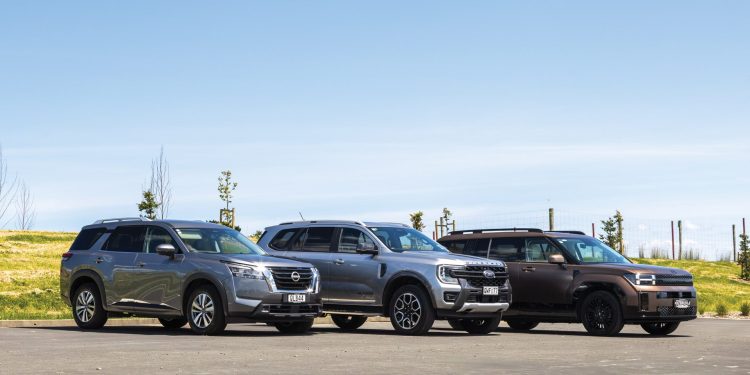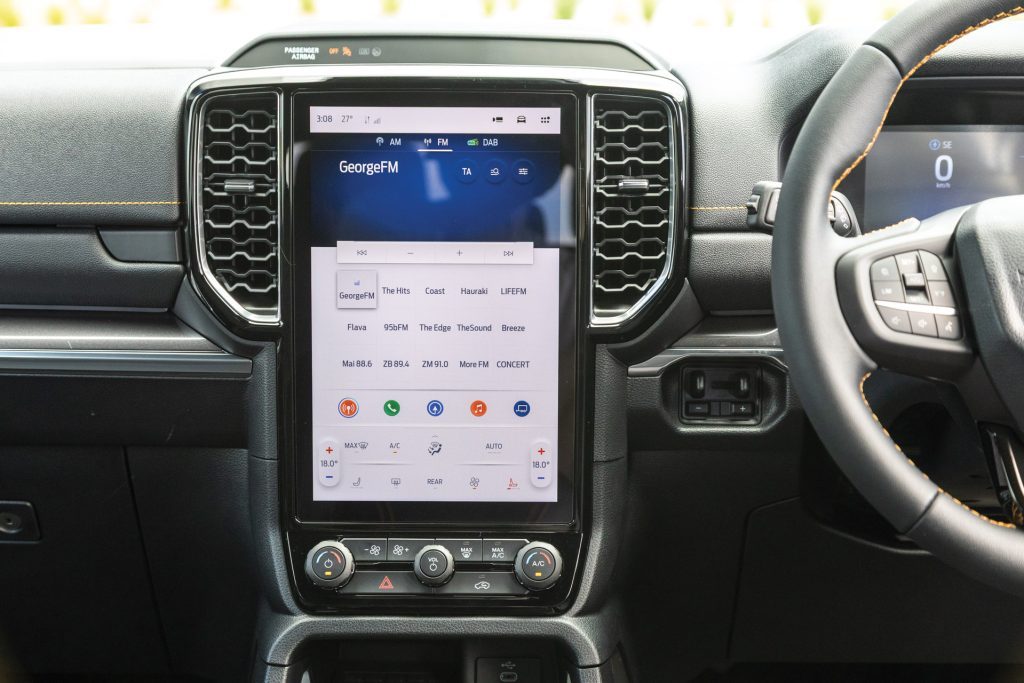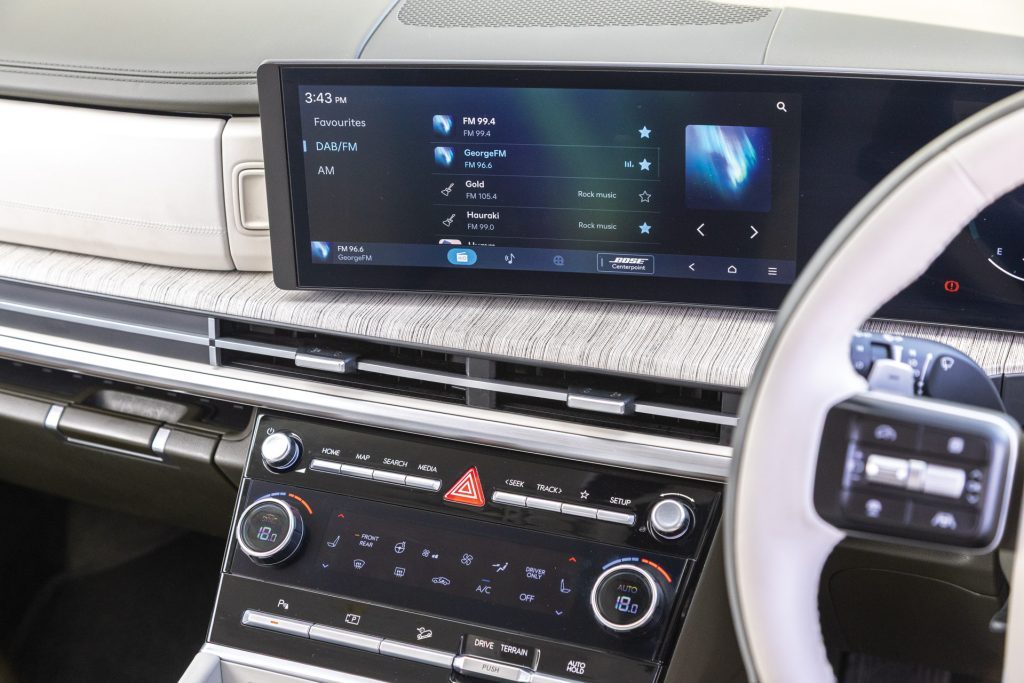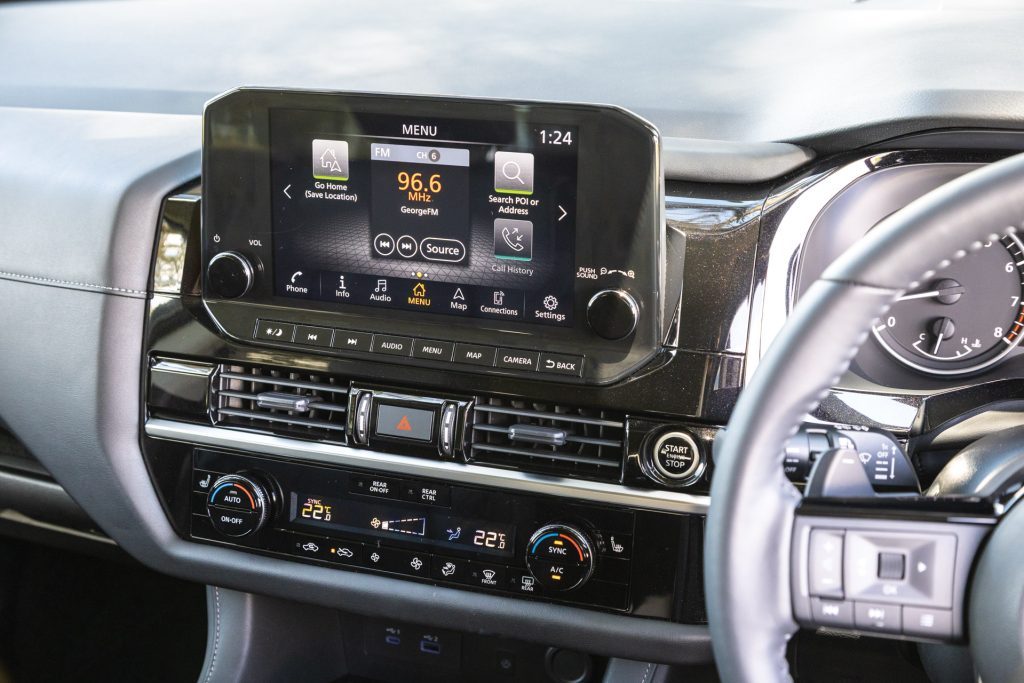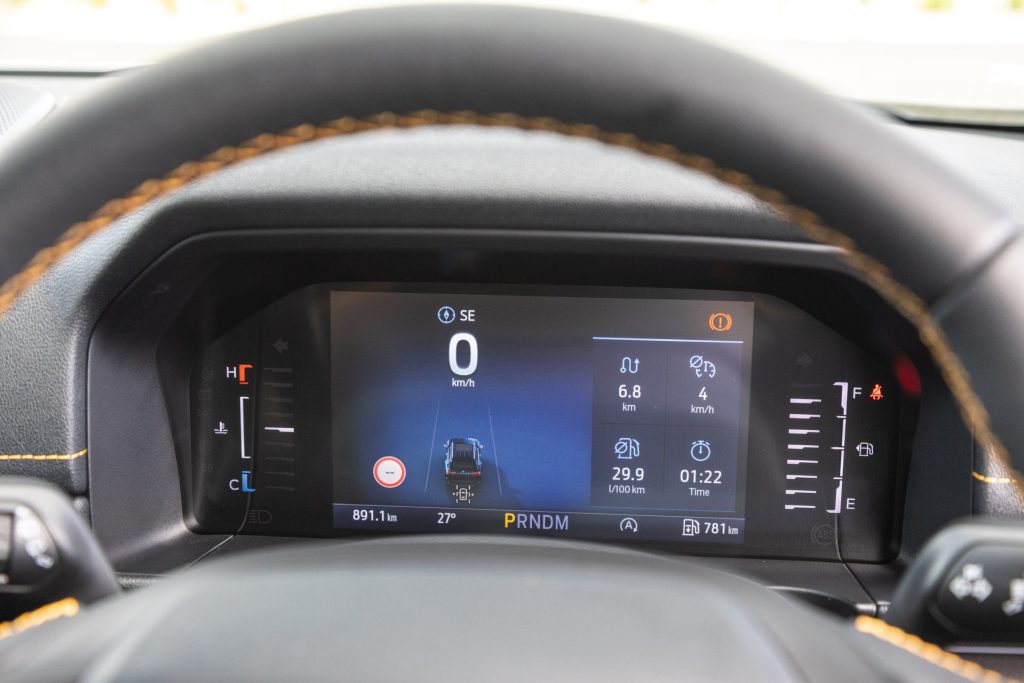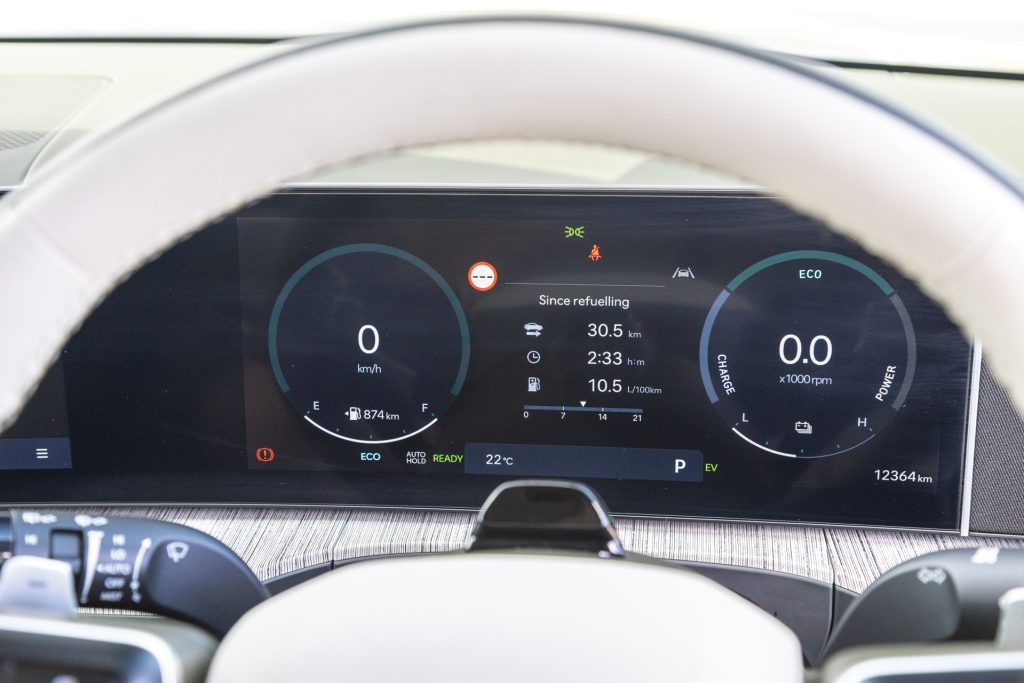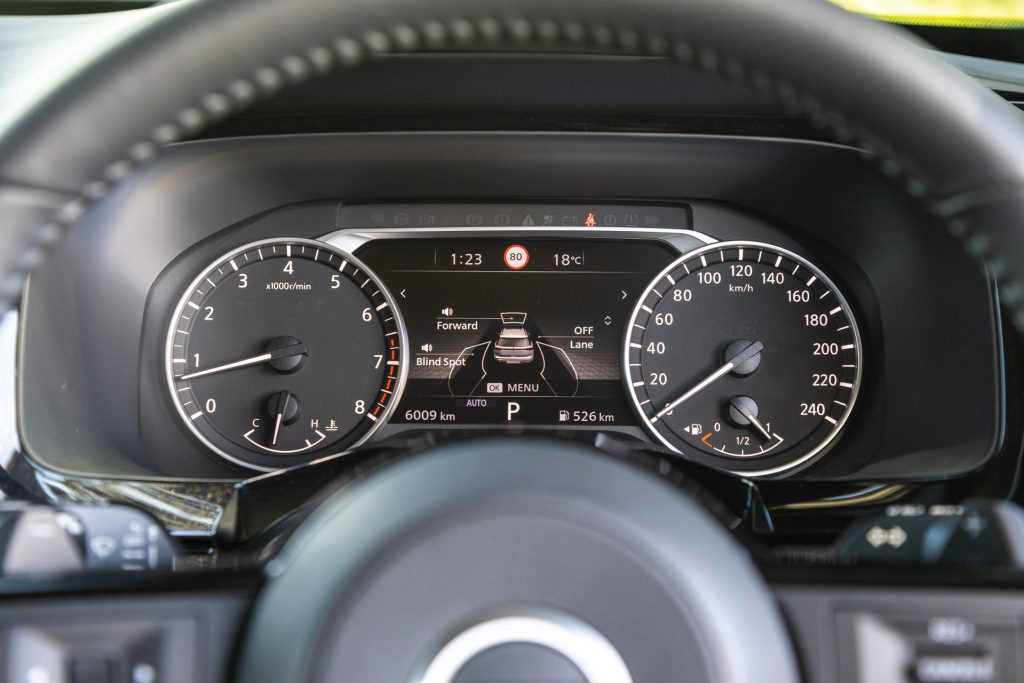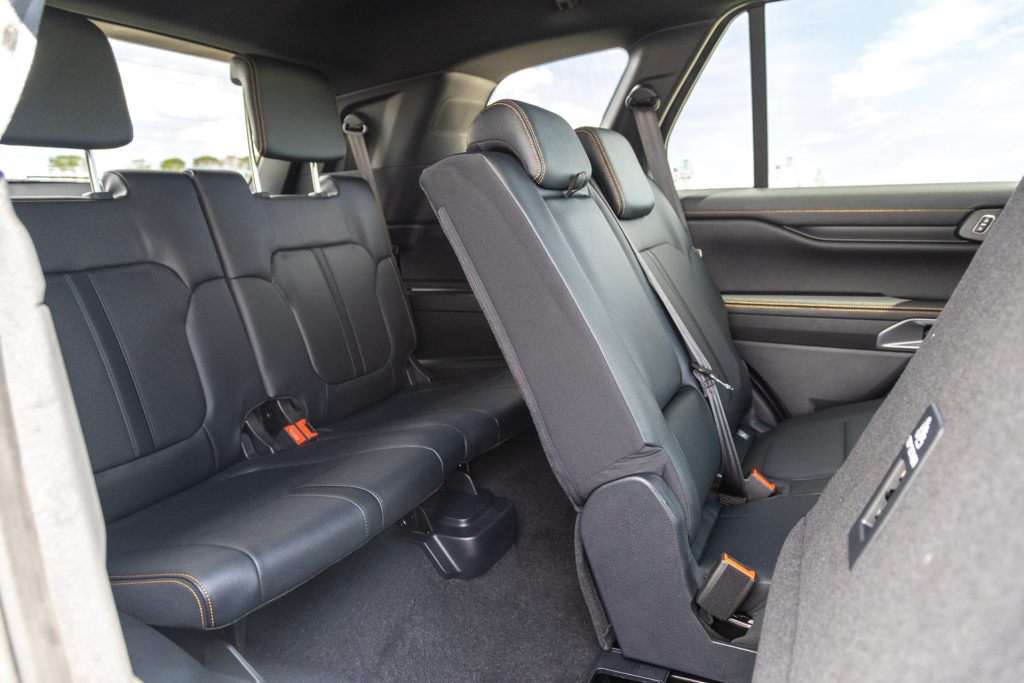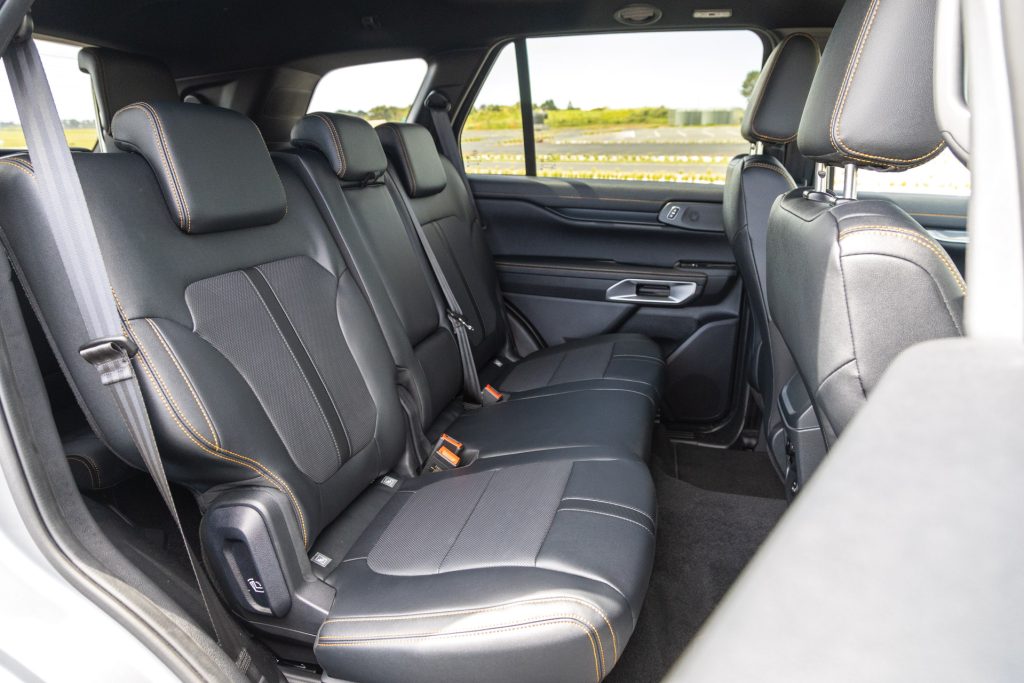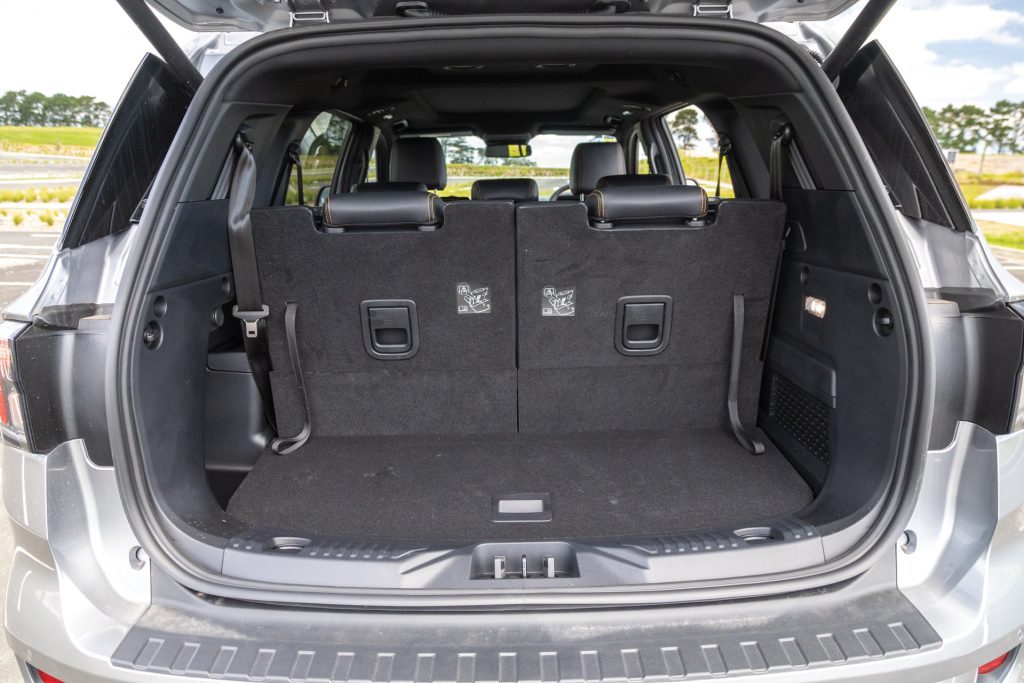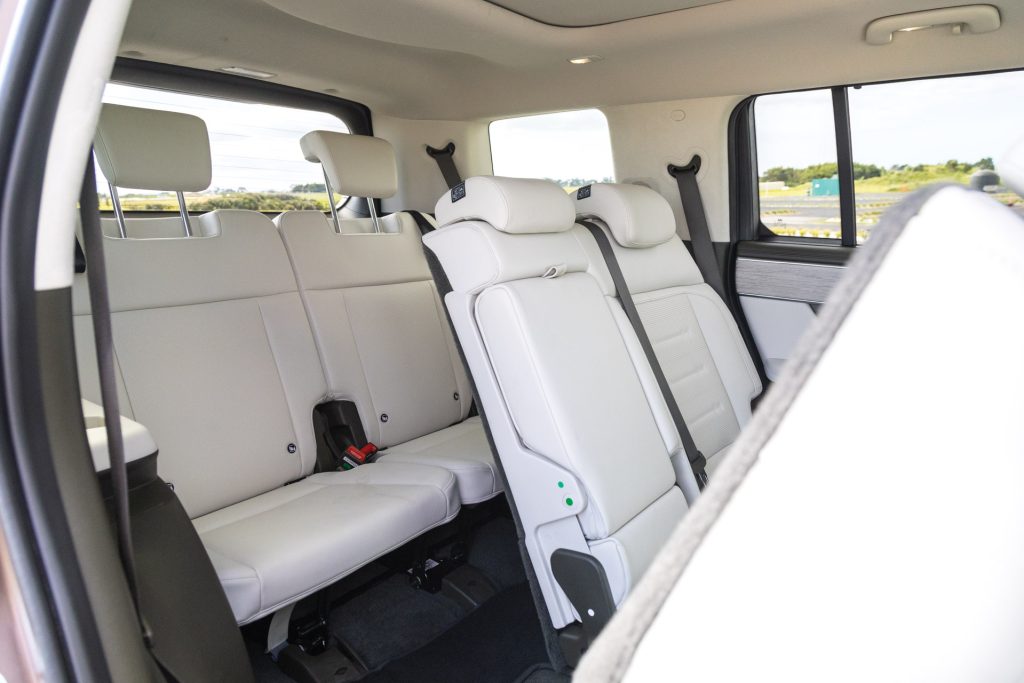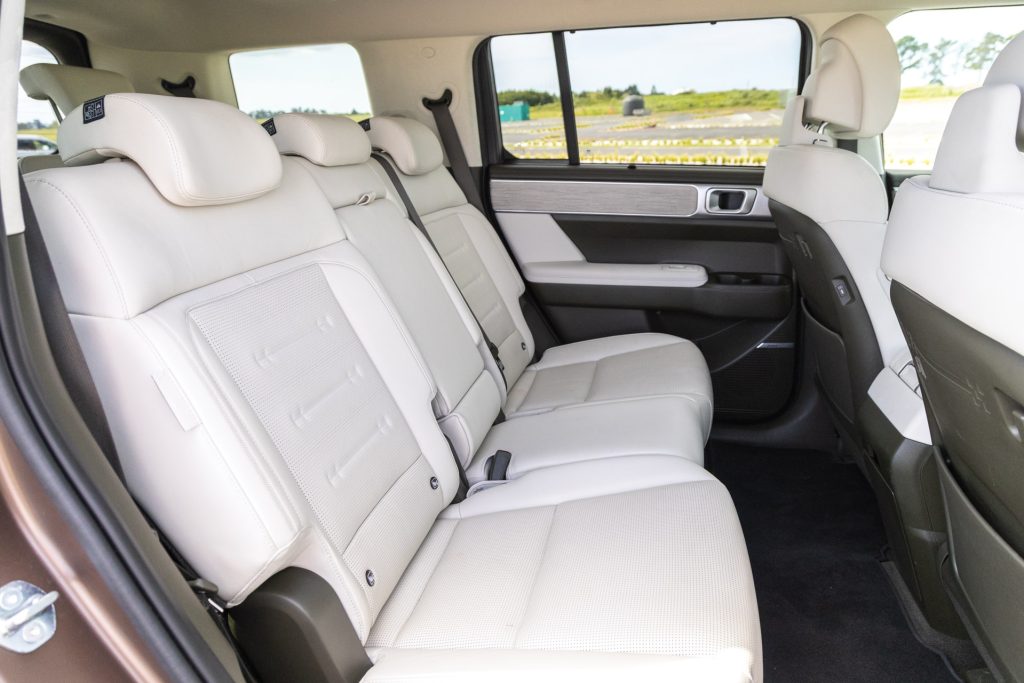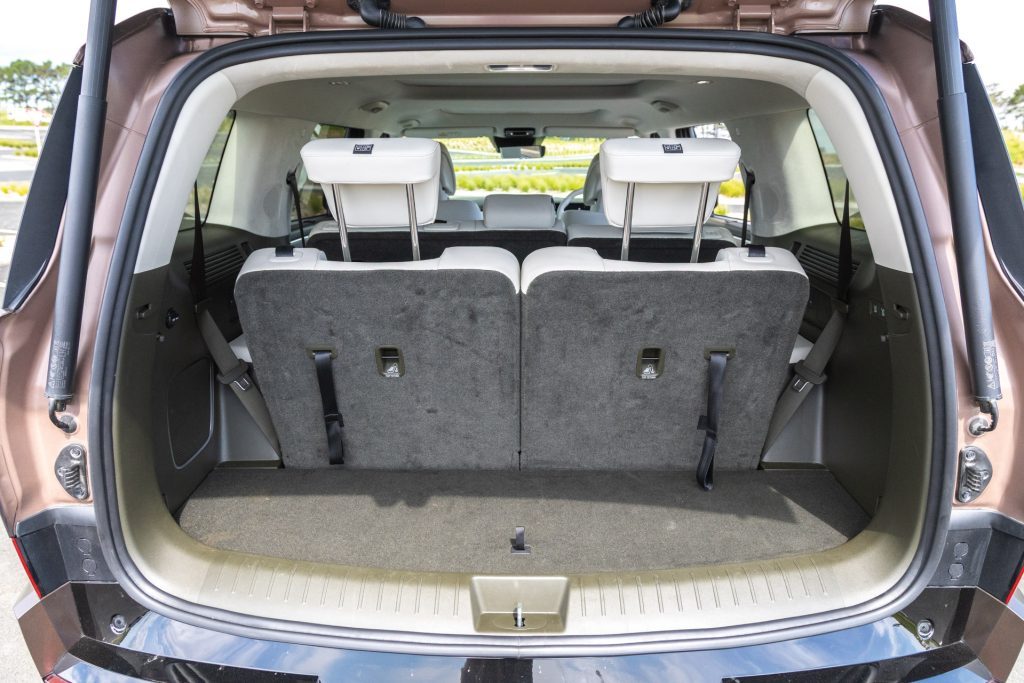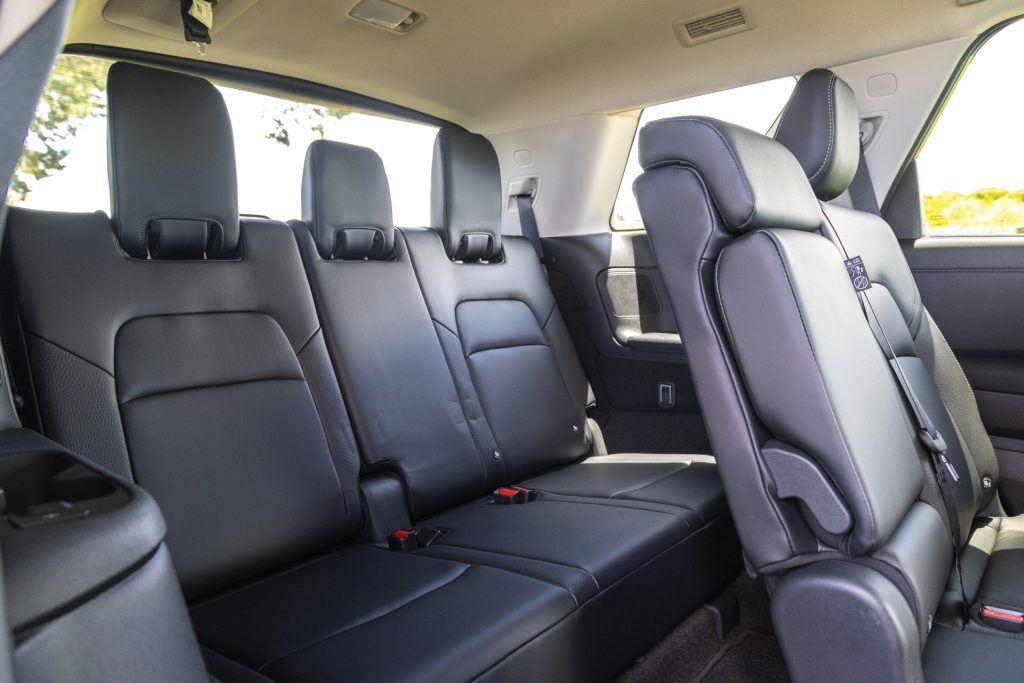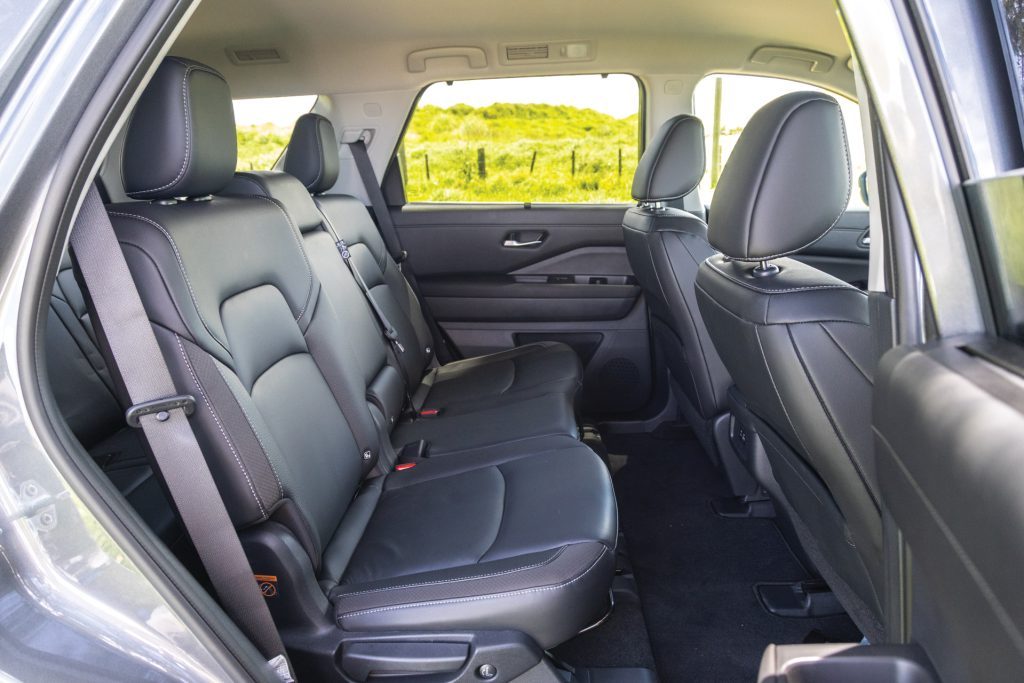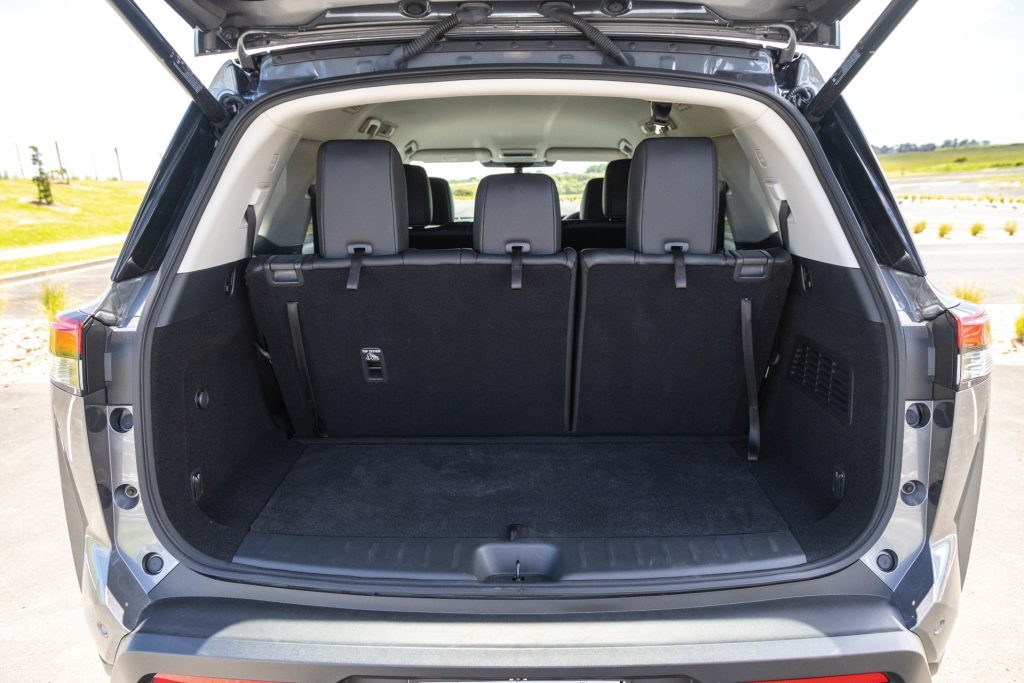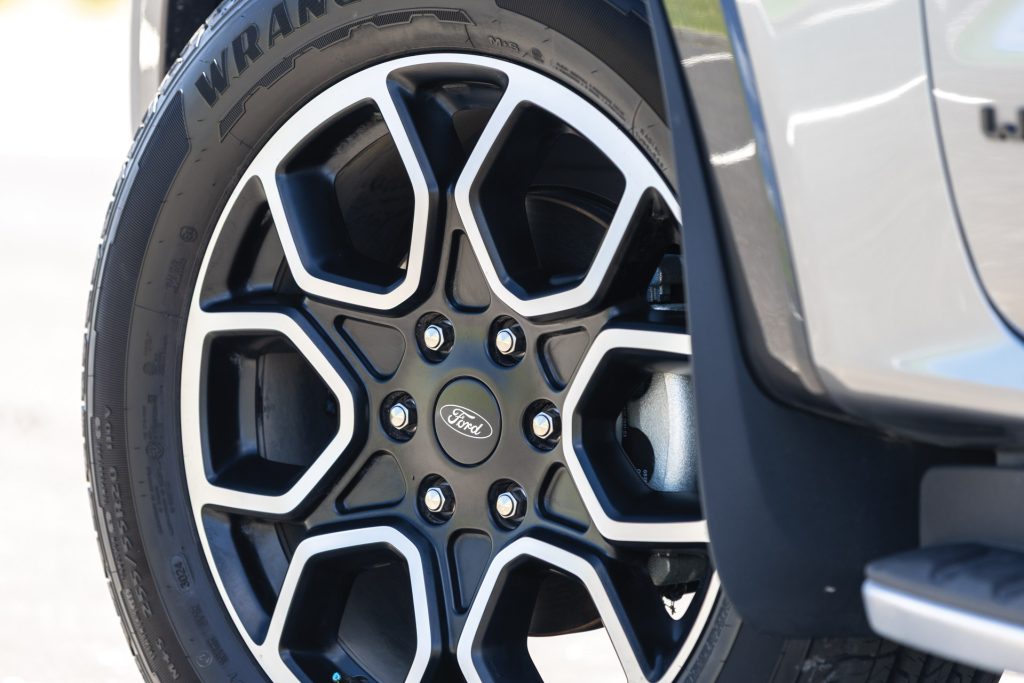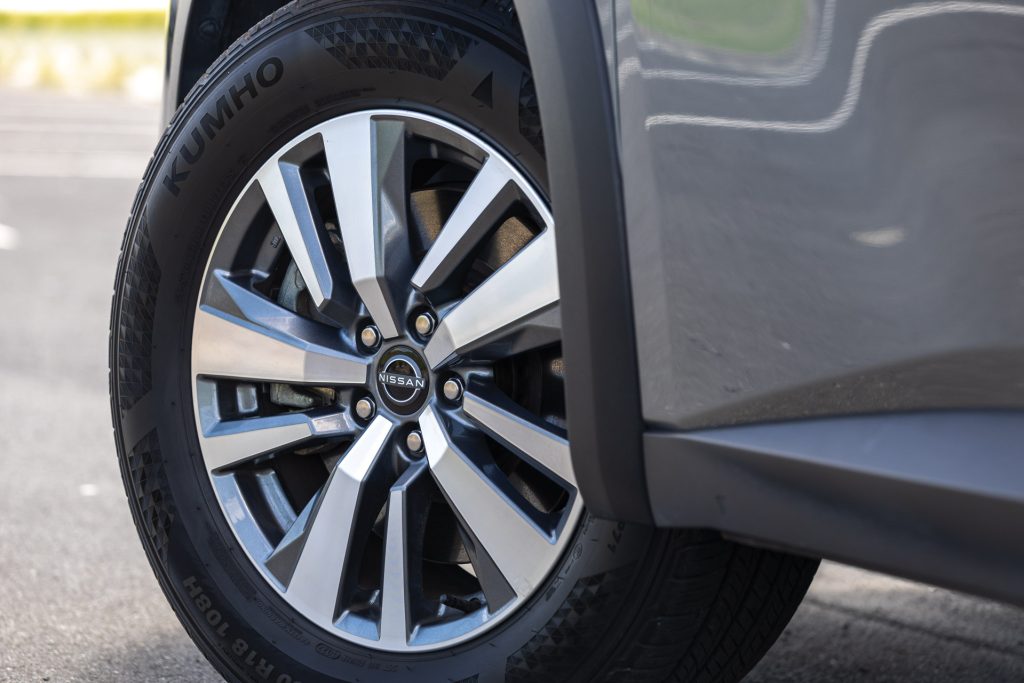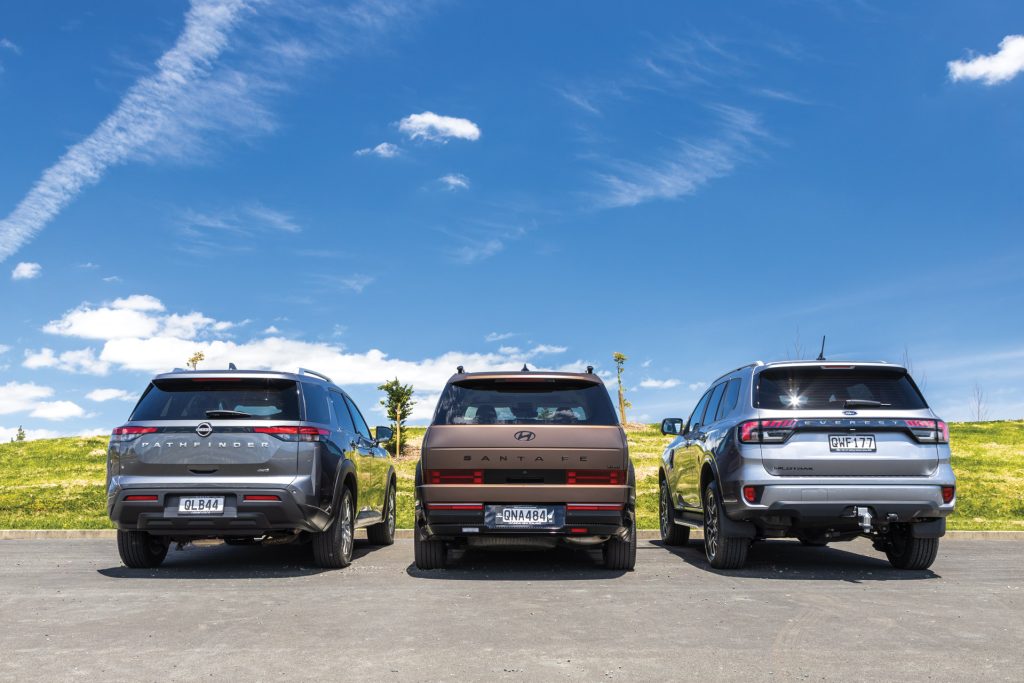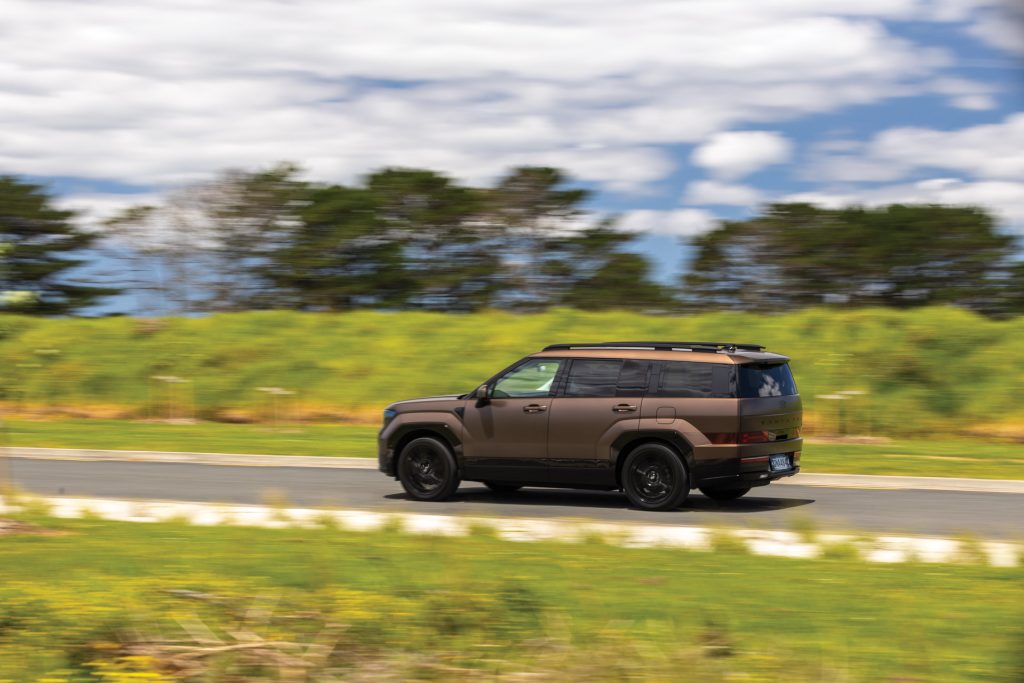Ford Everest vs Hyundai Santa Fe vs Nissan Pathfinder Comparison
Words: Kyle Cassidy | Photos: Isaac Western
Got kids to move but a people mover just won’t cut it? You’ll need a large seven-seat SUV then. Here we compare the Hyundai Santa Fe with the Ford Everest and the Nissan Pathfinder.
For people after a versatile family vehicle, the seven-seat SUV of the large variety ticks many boxes. It offers ample space for the kids and a couple of extras that might be tagging along. Or else the adaptable seating can be rearranged to suit the cargo in need of carrying. The modern SUV tends to come with a premium interior packed with features and all the safety gear to keep the family secure. You don’t even need a big tribe to want an SUV; it is now the default large car of the fleet, with a lot of presence about it.
One of the newer arrivals to the segment is the Hyundai Santa Fe, with its ‘bold’ styling and premium aspirations. Ford has been doing well with its 4×4 Everest. And for something a little different there is the big Nissan Pathfinder. Which of these is best for the ‘active family’?
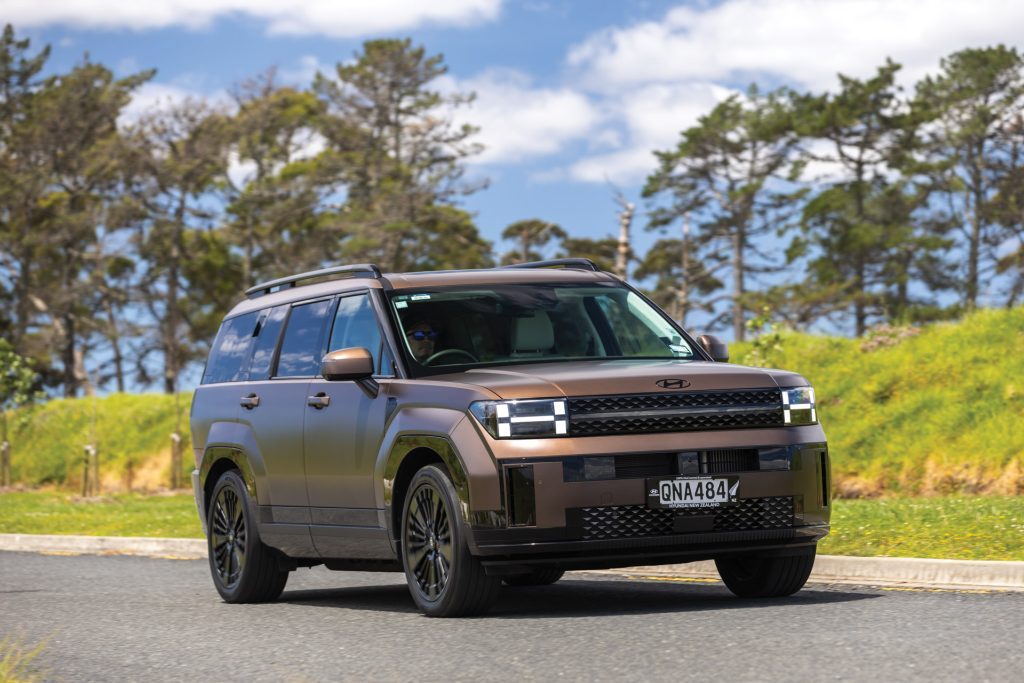
Pricey but packed
Each of these commands a fairly hefty price tag, making them fit for those families that can send their kids to school with more than just a Marmite sandwich and an apple for lunch.
The Hyundai Santa Fe range starts at $74,990 for the Active, with four models in total (all mechanically identical). The Calligraphy on test here costs $99,990. It’s a bit OTT however; the mid-spec Elite at $79,990 is a better option and still has enough baubles to keep ’em happy.
The Pathfinder is the Ti at $83,490, a model you’d deem to be well specified too. However, you can spend $5k more and get the Ti-L with even more gear.
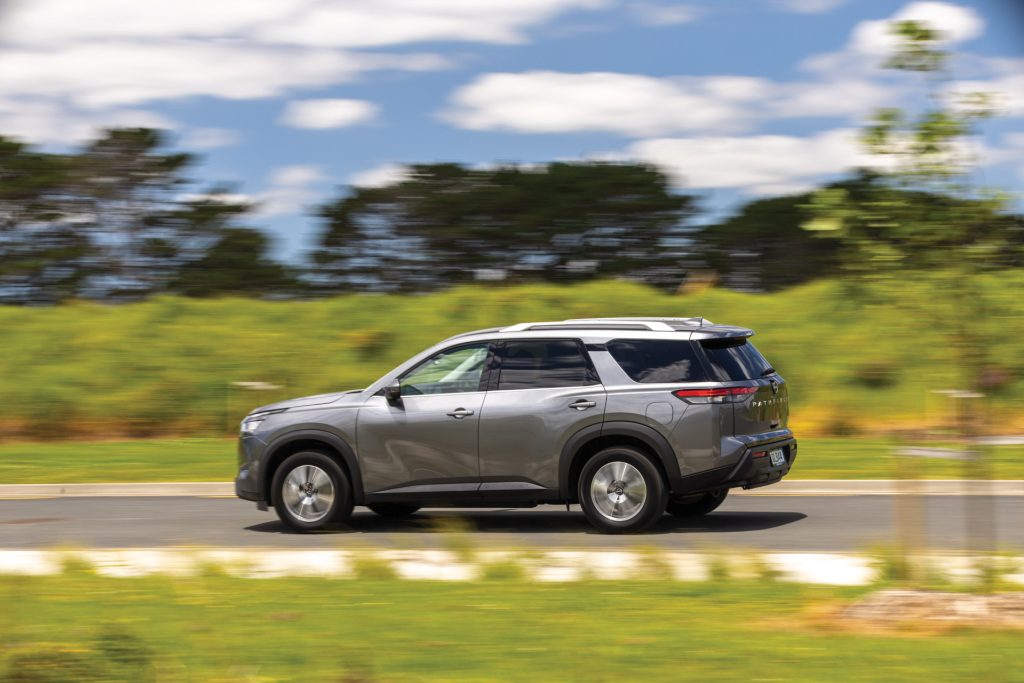
The Everest on test is the Wildtrak spec, a limited-run model priced at $86,990. It has a bit more fruit than the 2.0-litre biturbo Sport ($81,490) and the same 3.0-litre V6 engine as the Platinum ($91,490). But it lacks a few of that model’s fancier features.
Given the prices, all are well specified with leather-trimmed interiors, smart keys, sat nav, parking cameras, a range of active and passive safety features and plenty of conveniences to manage busy family life.
Nissan and Ford both offer five year/150,000km warranties. Hyundai has an offer on the Santa Fe at present, matching the warranty of the other two, while also adding three years of free servicing.
What powers them?
The newest model is the Santa Fe, which has gone down the hybrid path. This outputs a combined 172kW/367Nm from its 1.6T petrol and electric motor. The latter is a 44kW/264Nm unit housed in the transmission, working via the six-stage auto. Overall fuel use is a claimed 6.2L/100km.
Born for the USA, Pathfinder makes 202kW and 340Nm from its 3.5-litre petrol-fired V6, processed via a nine-speed auto. Like Santa Fe, it has an on-demand type of AWD system. Without any electrification, the fuel use figure is 11.7L/100km.
The Everest V6 uses a 3.0-litre diesel with 184kW/600Nm and 10-speed auto in behind, getting through fuel at a rate of 9.7L/100km. It is also an SUV you can actually attach the term 4×4 to. Everest rides on a full chassis, whereas the others are monocoques. The Ford runs a full-time AWD system with low range and a rear diff lock. It’s perhaps overly qualified for the urban school run with 220mm of ground clearance and its ability to wade through 800mm of water, but it may prove handy in rural areas.
Posh yet practical
Each has a versatile seating set-up, with a sliding middle row. Seats in the boot feature a 50/50 split and all are easily deployed. They all fold flat into the floor as they should. Each accommodates kids in the third row but one is the better body mover.
And it’s not the Ford. With its off-road bent, the Everest doesn’t have quite the same interior volume or versatility as the others here. It has the least second-row seat space on offer with limited leg room for the middle seat passenger. While access to the third row is acceptable, the rearmost seats lack padding, and are too upright. The Everest has the smallest boot dimensions too, with the loftiest load height and the least space in behind the third row.
Santa Fe has a smart one touch tilt-and-slide function on its middle row seats to grant access to the rear. While it’s lacking a little foot room back there, the seats are comfortable with plenty of headroom and Isofix points too. There is a generous amount of lounging room for middle row occupants, enough that even when you slide it forward to give those in the back more room, you still have sufficient left over. The bench is comfy too with numerous USB ports, window shades, bulk cup holders and a flat floor. There are natty features like the centre console box that is accessible from the rear and you can also drop all seats very easily. The boot space is better than Ford’s with a bigger tailgate and a much lower load height.
But it’s the Pathfinder that is the best people-moving SUV. It’s simply huge, which translates into the most interior space. It even has the ability to take three little gremlins across the third row. And for those paying attention, that makes this an eight seater. Pathfinder has the best entry to the rear, the middle row seat moving out of the way in a manner that allows a child seat to remain in place. It has the largest boot too, complete with some handy underfloor bins. And it offers more space with all rows in use. There is oodles of room in the second row, which also has window shades, USBs, seat heaters; it’s the best in terms of rear cabin accommodations.
What about up front?
The Ford has the command and conquer driving position, towering above the others. But its seat feels like it’s from a ute, lacking the added comfort and support of the others. It has the most utilitarian interior with more hard plastic and less soft surfacing. Everest doesn’t have the same quality feel as the crossovers, without as many of the creature comforts. Its big portrait-oriented screen displays the sat nav map best, and gives more space for the touchpoints. The ventilation buttons down below are a plus.
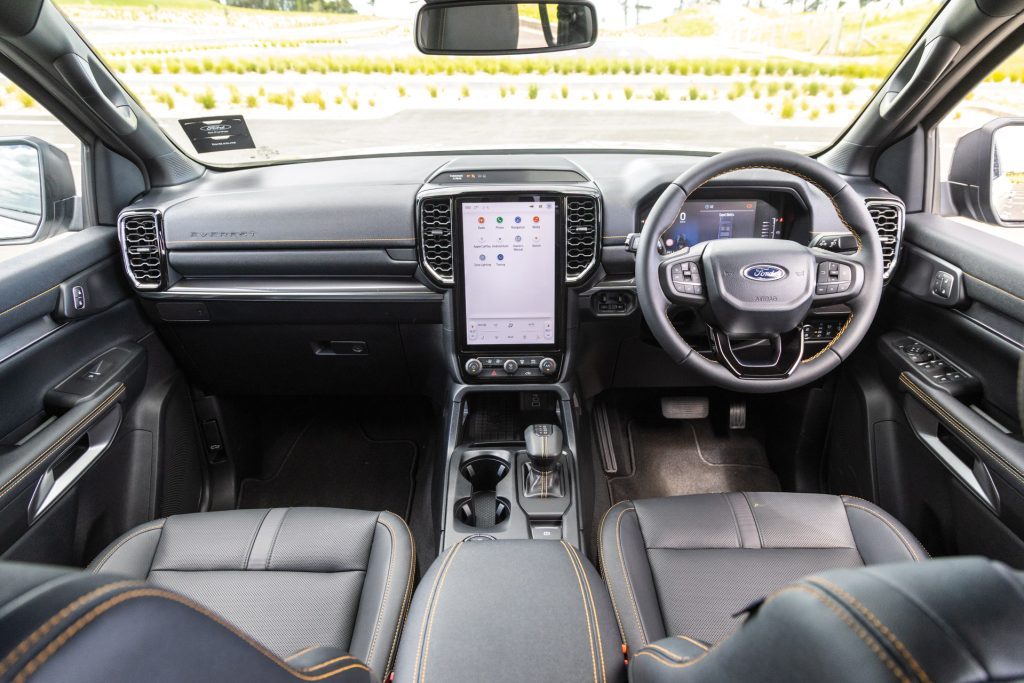
Pathfinder is the comfort king, the broad seats soft in the right spots and made for the bigger frame. You might call it old fashioned with its analogue dials, separate HVAC buttons and an infotainment system lacking in features, but it’s all quite easy to use. And its small driver display still shows you all the information you need. The glove box is small, but there’s a charge pad, an easy-to-use shifter and the camera shows you enough of your surroundings. It’s manages a more premium feel than the Ford, but it’s not as flash as the Hyundai.
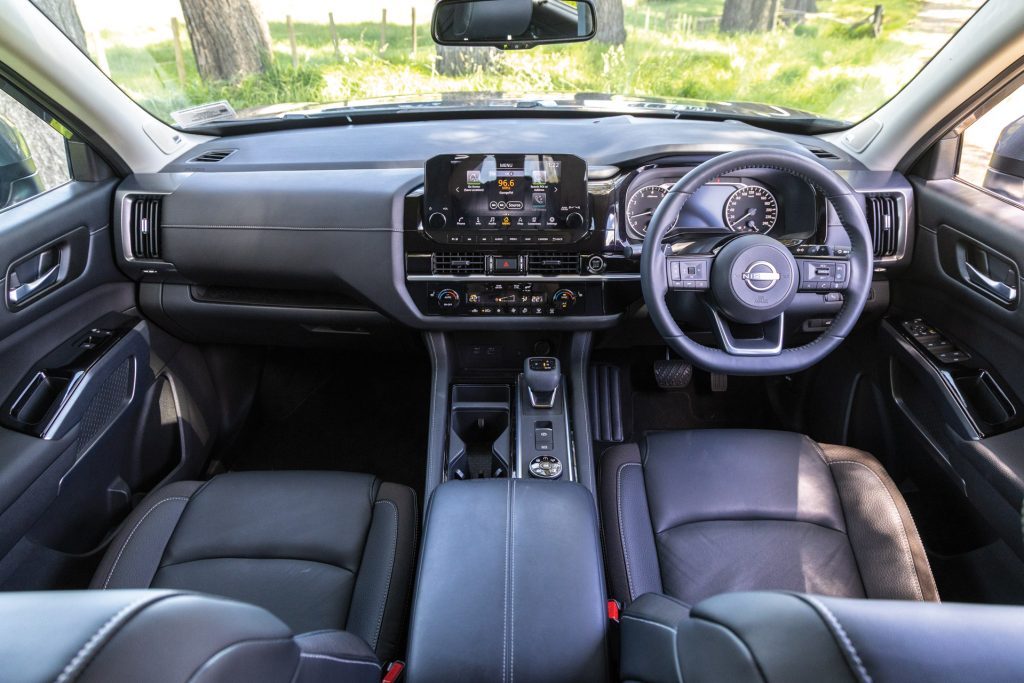
Santa Fe in its Caligraphy guise sure has a fancy interior. But do you really need a sanitising box (a small receptacle to put things where UV rays will blast the germs away)? This has the highest quality finishings, even if we’re not sold on the ivory and olive decor. The column-mounted shifter frees up space in this modern cabin to allow for twin charge pads on the console. There’s an expanse of screens across the dash. The system itself is reasonably logical, quick enough and employs a few buttons along with separate ventilation controls to keep everyone happy. And it’s a nice place to be. The seats here even feature a full relaxation mode where an Ottoman appears to take the load off when it’s nap time. There are plenty of clever storage options as well.
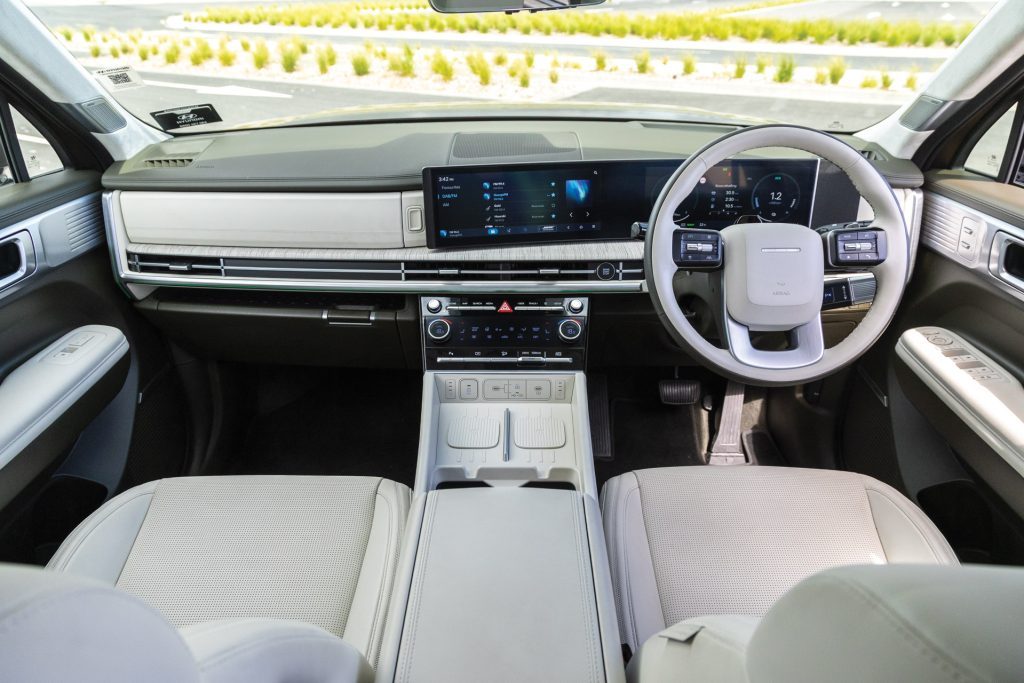
On the go
With different engines, they each have their own character. The Pathfinder’s V6 has a smooth and torque-rich delivery, the auto well matched with silky shifting to get it moving along while limiting the engine’s workload. But it still drinks the most, the average into the low teens when buzzing around town, settling on 12L/100km after some motorway miles.
The V6 in the Everest is a different beast with more torque still. It’s a quiet diesel, with minimal lag and lots of pull, especially from 1800rpm onwards. The 10-speed auto is an efficient operator too. But it’s hauling the heaviest machine here that pushes the most wind so its fuel use is no better than the Pathfinder’s.
No real surprise that the electrified machine uses the least fuel. This too is an relaxed powertrain, with plenty of smooth and easy torque. And by switching off the engine for roughly half the time on the go (particularly in the city), it sips gas at a lesser rate; go easy on the gas pedal and the electric motor alone can maintain your momentum, helping it achieve an average in the high sevens.
The Pathfinder has the most absorbent ride, both in and out of the city, while the Hyundai’s is a touch firmer and more composed. Sitting high on that big chassis, the Everest manages to ride rather well, but there are a few jiggles and shakes that just aren’t present in the others.

The Ford works well in the city, however, the turning circle better than the Pathfinder’s. It manages to fit into car parks easier too. That big Nissan is a beast in the supermarket lot. Santa Fe is a bit more manageable with better outward vision, the best parking camera and light, easy steering.
Out of town, the Nissan feels weighty, and is the most susceptible to understeer in tricky bends. Its steering gets the Luxon award too; out of touch with what’s happening down below. But it rides well, and is quiet on the go.
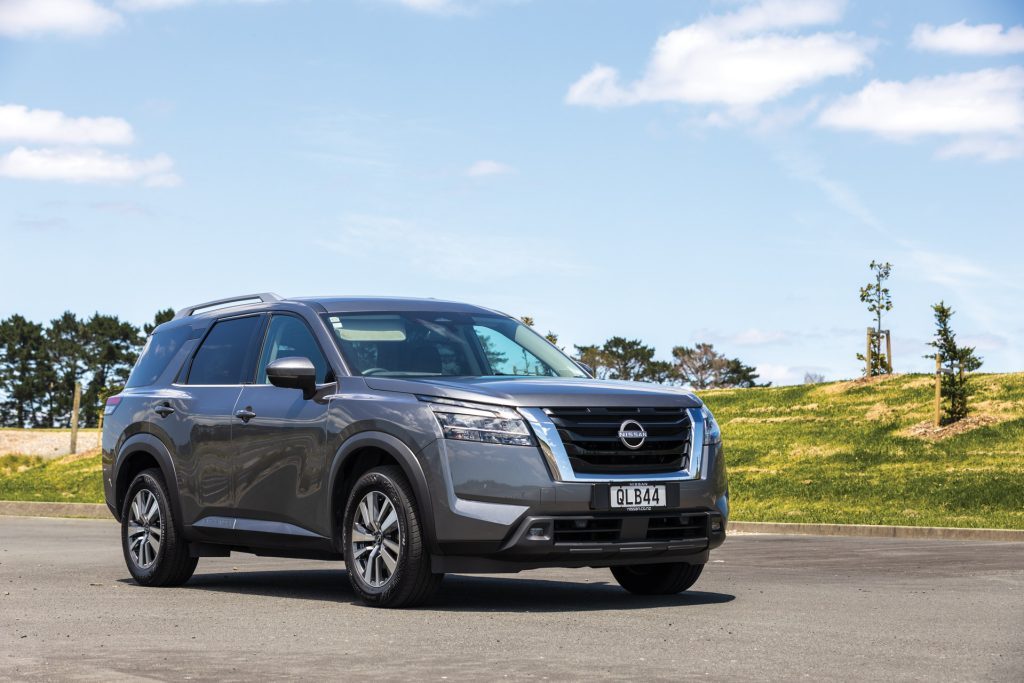
Where the Pathfinder has a front-drive bias, the Everest is more of a rear-drive set-up which helps dynamically. It’s heavy but quite well balanced and, despite the initial roll, handles nicely for what it is, with positive steering. On the highway, the Santa Fe has the best steering with well judged weighting and just enough feedback. Its road holding and control keeps progress calm. The Hyundai feels safe and competent all the time.
Active cruise works effectively in each and being an older architecture there are less safety nannies in the Pathfinder, the lane departure system tolerable. It’s a similar story for the Everest. The Hyundai has more spies on board, the drive monitor on to your case should you take your eyes off the road, and the speed limit minder beeps at you too.
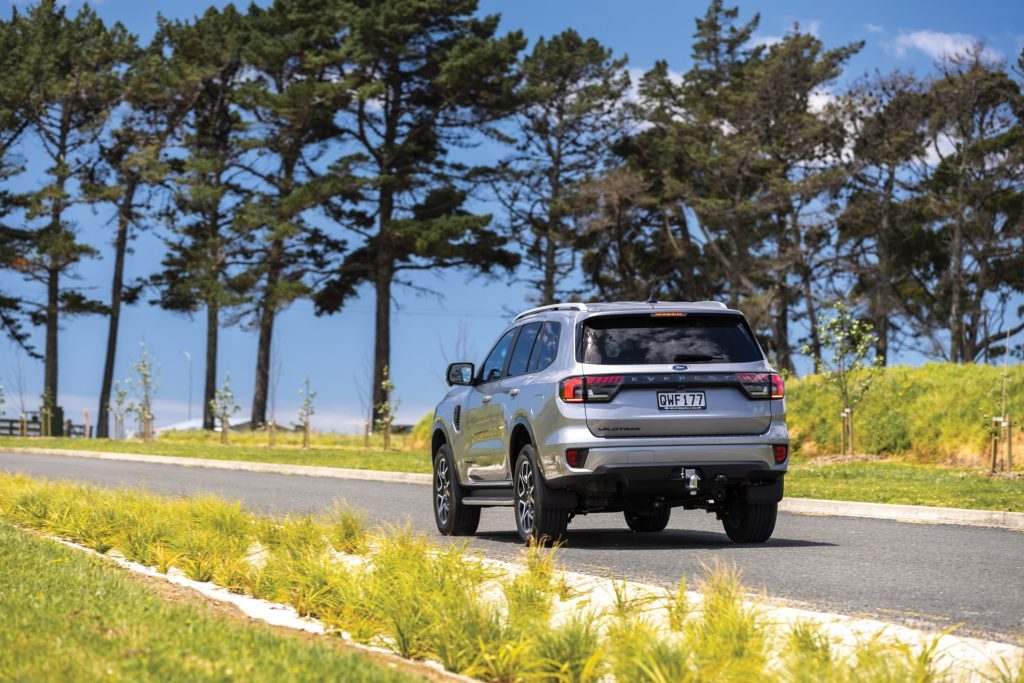
What is the pick then?
The Hyundai covers most bases better than the others, although we recommend the Active or Elite model as being better value. Its hybrid powertrain is refined and efficient, it has a high quality, versatile interior and the drive is impressive.
Pathfinder is the best people carrier here if that is your ultimate priority.
The Everest is the one for those who need a passenger vehicle that can tow; braked capacity is 3500kg and a tow bar comes as standard. Its 4×4 pedigree will suit those living out of the urban confines and while it works in the city it’s not as comfortable or refined as the crossovers in this regard.
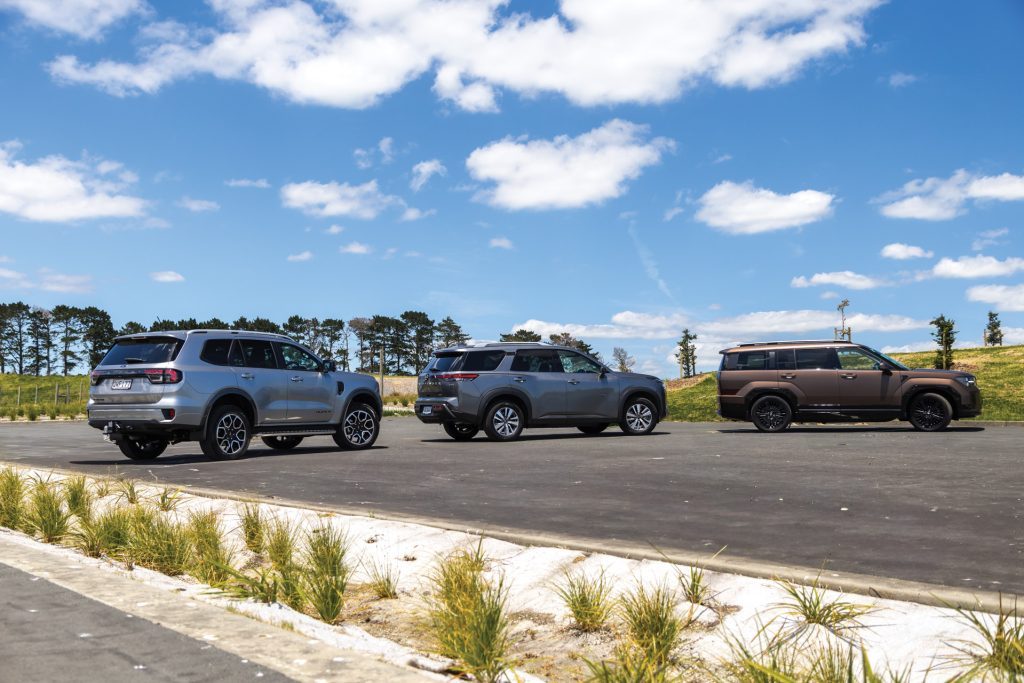
Ford Everest Wildtrak
$86,990 / 9.7L/100km / 256g/km
0-100 km/h 8.91s
80-120 km/h 6.71s (189m)
100-0 km/h 38.97m
Speedo error 97 at an indicated 100km/h
Ambient cabin noise 69.9dB@100km/h
Engine 2997cc / V6 / T / DI
Max power 184kW@3250rpm
Max torque 600Nm@1750-2250rpm
Drivetrain 10-speed auto / AWD
Front suspension Wishbones / swaybar
Rear suspension Solid axle / swaybar
Turning circle 11.8m (3.2 turns)
Front brakes Ventilated discs
Rear brakes Ventilated discs
Stability systems ABS, ESP, TV
Safety AEB, ACC, BSM, LDW, RCTA, ALK, AHB
Tyre size f/r-255/55R20
Wheelbase 2900mm
L/W/H 4940 / 2026 / 1844mm
Track f-1620mm r-1620mm
Fuel capacity 80L
Luggage capacity 259 / 898 / 1818L
Tow rating (3500kg braked)
Service intervals Variable
Warranty 5yrs / 150,000km
ANCAP rating ★★★★★ (2022)
Weight (claimed) 2490kg
Hyundai Santa Fe Hybrid Calligraphy
$99,990 / 6.2L/100km / 142g/km
0-100 km/h 9.49s
80-120 km/h 5.95s (166m)
100-0 km/h 37.09m
Speedo error 98 at an indicated 100km/h
Ambient cabin noise 69.9dB@100km/h
Engine 1598cc / IL4 / T / DI
Max power 132kW@5500rpm
Max torque 265Nm@1500-4000rpm
Motor output 44kWh / 264Nm
Battery 1.49kWh
Hybrid System Output 172kW / 367Nm
Drivetrain 6-speed auto / on-demand AWD
Front suspension Mac strut / swaybar
Rear suspension Multilink / swaybar
Turning circle 12.4m (2.5 turns)
Front brakes Ventilated discs
Rear brakes Discs
Stability systems ABS, ESP, TV
Safety AEB, ACC, BSM, LDW, RCTA, ALK, AHB
Tyre size f/r-255/45R20
Wheelbase 2815mm
L/W/H 4830 / 1900 / 1770mm
Track f-1637mm r-1647mm
Fuel capacity 67L
Luggage capacity 628-992L
Tow rating 750kg (1650kg braked)
Service intervals 12 months / 10,000km
Warranty 5yrs / 150,000km
ANCAP rating Not yet rated
Weight (claimed) 1980kg
Nissan Pathfinder Ti
$83,490 / 11.7L/100km / 273g/km
0-100 km/h 8.25s
80-120 km/h 5.40s (157m)
100-0 km/h 36.89m
Speedo error 97 at an indicated 100km/h
Ambient cabin noise 70.0dB@100km/h
Engine 3498cc / V6 / DI
Max power 202kW@6400rpm
Max torque 340Nm@4800rpm
Drivetrain 9-speed auto / on demand AWD
Front suspension Mac strut / swaybar
Rear suspension Multilink / swaybar
Turning circle 11.8m (2.7 turns)
Front brakes Ventilated discs
Rear brakes Discs
Stability systems ABS, ESP, TV
Safety AEB, ACC, BSM, LDW, RCTA, ALK, AHB
Tyre size f/r-255/60R18
Wheelbase 2900mm
L/W/H 5004 / 1978 / 1802mm
Track f-1700mm r-1700mm
Fuel capacity 71L
Luggage capacity 205-554-782L
Tow rating 750kg (2700kg braked)
Service intervals 12 months / 15,000km
Warranty 5yrs / 150,000km
ANCAP rating ★★★★★ (2022)
Weight (claimed) 2044kg


